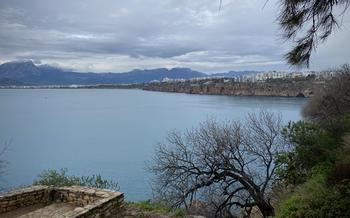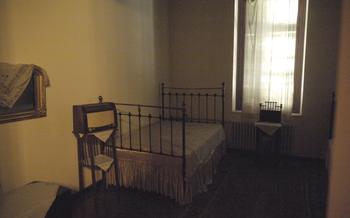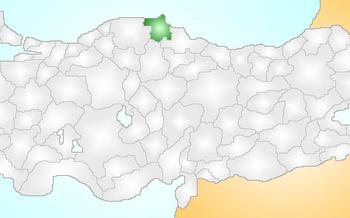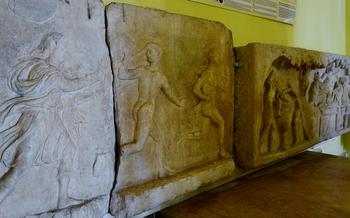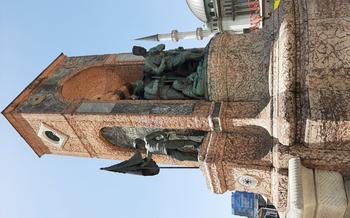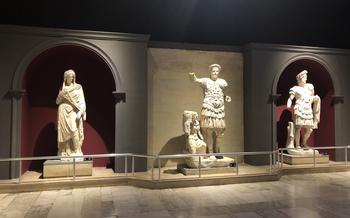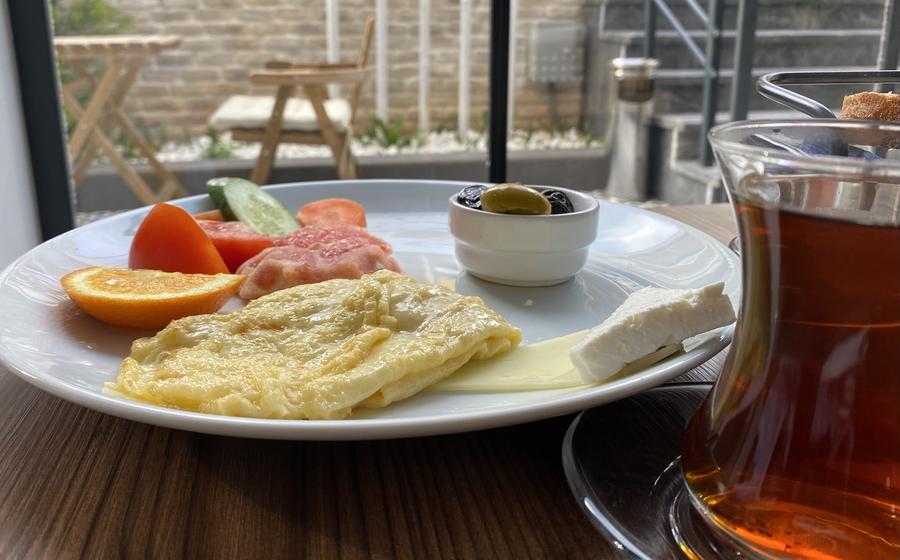
Ataturk's House Museum
- The House of Mustafa Kemal Atatürk
- Location and Getting There
- Hours of Operation and Admission Fees
- Historical Background
- Architectural Features
- Personal Belongings and Memorabilia
- Guided Tours
- Exhibitions and Displays
- The Garden: A Tranquil Oasis Amidst History
- Significance for Visitors
- Tips for Visitors
- Nearby Attractions
- Historical Context of Antalya
- Atatürk and the Turkish War of Independence
The House of Mustafa Kemal Atatürk
Mustafa Kemal Atatürk, the revered founder of modern Turkey, once called Antalya his home. His residence in the city, now known as the Atatürk's House Museum, offers a fascinating glimpse into the life and legacy of this extraordinary leader.
Built in the early 20th century, the house exudes historical significance and architectural charm. Its walls hold countless stories and memories of Atatürk's time spent in Antalya. Visitors can wander through the rooms, admire the preserved furnishings, and immerse themselves in the ambiance of a bygone era.
Personal belongings and memorabilia, carefully curated and displayed, provide a tangible connection to Atatürk's life. From his uniforms and awards to his personal effects, these artifacts narrate the journey of a man who transformed a nation. Guided tours, led by knowledgeable staff, bring the history alive, shedding light on Atatürk's vision, his struggles, and his enduring impact on Turkey.
Location and Getting There
The Ataturk's House Museum is conveniently situated in the heart of Antalya, making it easily accessible for visitors. To reach the museum, you can take a leisurely stroll from the city center, enjoying the vibrant atmosphere and historical landmarks along the way. Alternatively, you can hop on a public bus that stops right outside the museum. For those arriving by car, there is ample parking space available in the vicinity. The museum is also wheelchair accessible, ensuring that all visitors can comfortably explore the premises.
Hours of Operation and Admission Fees
The Ataturk's House Museum is open to the public daily except for Mondays. The opening hours are from 8:30 AM to 5:30 PM, allowing visitors ample time to explore the museum and its exhibits. Regular admission fees are charged for adults, with discounted rates available for students and seniors. Visitors can purchase tickets at the museum's entrance. The museum occasionally hosts special events and temporary exhibitions, which may have different admission fees or require advance reservations. To avoid crowds and ensure a more personalized experience, it is recommended to visit during the early morning or late afternoon hours. Additionally, checking the museum's website or contacting them directly for up-to-date information on admission fees, special events, and any temporary closures is advisable.
Historical Background
Mustafa Kemal Atatürk, the revered founder of modern Turkey, played a pivotal role in the Turkish War of Independence. His visionary leadership and unwavering determination transformed the course of history, leading to the establishment of a secular and independent Turkish Republic.
During this tumultuous period, Atatürk's influence extended far beyond the battlefields. He recognized the strategic importance of Antalya, a city with a rich history and a diverse population. Atatürk's visits to Antalya were not merely symbolic; they were strategic moves aimed at galvanizing support for the independence movement.
Through his speeches, meetings, and interactions with local leaders, Atatürk inspired the people of Antalya to join the fight for freedom. His presence in the city served as a beacon of hope, uniting diverse communities under a common cause.
The house where Atatürk resided during his visits to Antalya now stands as a testament to his legacy. Transformed into a museum, it offers visitors a glimpse into the life of this extraordinary leader and the profound impact he had on the city and the nation.
Architectural Features
The Ataturk's House Museum in Antalya is a stunning example of architectural harmony, blending Ottoman and European influences. Its exterior boasts a traditional Turkish style with whitewashed walls, arched windows, and a red-tiled roof. The interior, however, showcases a more European aesthetic, characterized by elegant furnishings, intricate moldings, and decorative fireplaces.
The house's layout is spacious and functional, featuring a central hall, several rooms, and a large garden. The rooms are arranged around the central hall, which serves as a gathering space and leads to the other areas of the house. The rooms vary in size and purpose, with some serving as living spaces, others as bedrooms, and one as a study.
Notable architectural elements include the ornate ceiling decorations, the intricately carved wooden doors, and the colorful stained glass windows. The house also features a unique blend of traditional Turkish and European decorative motifs, such as ceramic tiles, marble floors, and floral patterns.
In comparison to other historical buildings in Antalya, the Ataturk's House Museum stands out for its exceptional preservation and its unique architectural style. It is a testament to the skill and artistry of the builders who constructed it and a valuable example of the architectural heritage of Antalya.
Personal Belongings and Memorabilia
The Ataturk's House Museum boasts an impressive collection of personal belongings and memorabilia that provide visitors with an intimate glimpse into the life of the revered Turkish leader. Among the highlights are his military uniforms, medals, and decorations, which showcase his distinguished career as a soldier and statesman. Visitors can also see his personal effects, such as his clothing, furniture, and writing instruments, which offer insights into his daily life and habits.
Of particular interest are the documents, photographs, and letters on display, which shed light on Ataturk's political and personal life. These include official documents related to the Turkish War of Independence and the foundation of the Turkish Republic, as well as personal letters and telegrams that reveal his thoughts, feelings, and relationships. Through these artifacts, visitors gain a deeper understanding of Ataturk's personality, his vision for Turkey, and his enduring legacy.
Guided Tours
Discover the fascinating stories behind Atatürk's life and legacy through guided tours offered at the Ataturk's House Museum. Led by knowledgeable and passionate guides, these tours provide an immersive experience that brings the museum's exhibits to life.
Whether you prefer to explore in your native language or immerse yourself in a foreign tongue, guided tours are available in a variety of languages to cater to international visitors. Take advantage of this opportunity to delve deeper into the historical significance of the house, its architecture, and the personal belongings of Atatürk.
During the tour, you'll be guided through the various rooms of the house, each offering a glimpse into Atatürk's life and achievements. Listen to captivating tales about his childhood, his role in the Turkish War of Independence, and his vision for a modern Turkey.
The guides will point out notable architectural features, personal effects, and documents that provide insights into Atatürk's daily life and personality. They'll also share stories about his interactions with world leaders, his passion for education, and his commitment to the Turkish people.
To make the most of your guided experience, come prepared with questions and engage with the guides. They are a wealth of knowledge and are eager to share their insights and expertise with visitors.
Guided tours are a fantastic way to gain a comprehensive understanding of Atatürk's life and legacy, and to appreciate the historical significance of the Ataturk's House Museum.
Exhibitions and Displays
The Ataturk's House Museum offers a variety of temporary exhibitions that delve into different aspects of Ataturk's life and legacy. These exhibitions often showcase rare artifacts, documents, and photographs that provide visitors with a deeper understanding of the founder of modern Turkey. Interactive displays and multimedia presentations bring history to life, making the museum experience more engaging for visitors of all ages.
Educational programs and workshops are regularly organized at the museum, catering to students and history enthusiasts. These programs aim to promote a deeper understanding of Ataturk's vision for a modern and secular Turkey, as well as his role in shaping the country's history. Special events and commemorations are held throughout the year to mark important dates and milestones in Ataturk's life and career. These events often include lectures, film screenings, and cultural performances, providing visitors with a unique opportunity to immerse themselves in the history and heritage of Turkey.
The Garden: A Tranquil Oasis Amidst History
The Ataturk House Museum is not just a repository of historical artifacts; it also boasts a beautiful garden that adds to its charm and tranquility. As you step into the garden, you are greeted by a burst of colors from the vibrant flowers that adorn the meticulously landscaped grounds. The lush greenery, shady trees, and fragrant blooms create a serene atmosphere that invites you to relax and reflect.
The garden holds historical significance as well. It was a favorite spot for Ataturk to contemplate and seek solace amidst the demands of his public life. He often spent time here, strolling along the paths, admiring the flowers, and finding inspiration in nature's tranquility.
Whether you are a history buff, a nature lover, or simply seeking a peaceful retreat, the garden at the Ataturk House Museum is a must-visit. Take a moment to sit on one of the benches, breathe in the fresh air, and let the beauty of the surroundings wash away your worries.
Significance for Visitors
Visiting the Atatürk's House Museum in Antalya is a profound experience that allows visitors to delve into the life and legacy of Mustafa Kemal Atatürk, the revered founder of modern Turkey. Beyond its historical significance, the museum offers a unique opportunity to understand the man behind the legend and gain insights into the significant role he played in shaping Turkey's destiny.
Atatürk's vision for a modern, secular, and progressive Turkey was groundbreaking and revolutionary for his time. His unwavering commitment to these ideals, coupled with his exceptional leadership skills, guided Turkey through a period of immense transformation and modernization. By visiting his house museum, visitors can appreciate the magnitude of his achievements and the lasting impact of his vision on the country's development.
The museum also fosters a sense of national pride and unity among Turkish citizens. Atatürk's legacy continues to inspire and motivate generations, reminding them of the sacrifices and struggles that led to the establishment of the Turkish Republic. His unwavering belief in the potential of the Turkish people and his dedication to their well-being remain a source of inspiration and unity for the nation.
Exploring the museum provides a window into Atatürk's daily life, his personal interests, and his passion for Turkey. Through the artifacts, documents, and photographs on display, visitors gain a deeper understanding of the man who dedicated his life to serving his country. The museum encourages visitors to reflect on Atatürk's leadership, his unwavering commitment to progress, and the enduring legacy he has left behind.
Tips for Visitors
To make the most of your visit to the Ataturk's House Museum, here are some insider tips:
-
Plan your visit for the morning or late afternoon: This will help you avoid the crowds and enjoy a more peaceful and intimate experience.
-
Dress respectfully: As a sign of respect for Atatürk and the museum, dress appropriately by avoiding shorts, tank tops, or revealing clothing.
-
Be mindful of photography guidelines: While photography is generally allowed inside the museum, flash photography and tripods are not permitted. Please be respectful of other visitors and avoid taking photos that may disturb their enjoyment.
-
Explore the surrounding area: After visiting the museum, take some time to explore the surrounding neighborhood. There are several nearby attractions, including the Antalya Museum, the Old City, and the Konyaalti Beach.
-
Combine your visit with other attractions: If you have time, consider combining your visit to the Ataturk's House Museum with other nearby attractions, such as the Antalya Aquarium or the Düden Waterfalls. This will allow you to make the most of your time in Antalya and experience a variety of cultural and historical offerings.
Nearby Attractions
Antalya is a treasure trove of historical sites, cultural attractions, and natural wonders, offering visitors a diverse range of experiences. Beyond the Atatürk's House Museum, there are several other landmarks and attractions worth exploring.
-
Kaleiçi (Old Town): Immerse yourself in the charm of Antalya's Old Town, with its narrow cobblestone streets, traditional Ottoman houses, and historic landmarks. Explore the ancient city walls, visit the Hadrian's Gate, and soak in the vibrant atmosphere of this atmospheric neighborhood.
-
Antalya Museum: Discover the rich history and culture of Antalya at its renowned museum. The museum houses an impressive collection of artifacts from various civilizations that have shaped the region, including ancient Greek, Roman, and Byzantine relics.
-
Düden Waterfalls: Marvel at the beauty of the Düden Waterfalls, a natural wonder located just a short distance from the city center. Witness the cascading waters plunge into the Mediterranean Sea, creating a breathtaking spectacle.
-
Mount Olympos and Chimaera: Explore the slopes of Mount Olympos, where you can hike through lush forests, visit ancient ruins, and witness the eternal flames of Chimaera, a natural phenomenon that has captivated visitors for centuries.
These attractions, along with many others, offer a glimpse into Antalya's rich history and diverse cultural heritage. Whether you're interested in exploring ancient ruins, admiring natural wonders, or simply soaking in the local atmosphere, Antalya has something to offer every traveler.
Historical Context of Antalya
Antalya, a city steeped in history, boasts a rich tapestry of civilizations that have left their mark on its landscape and culture. From the ancient Greek city of Attaleia to the Roman Empire's prominent role, Antalya has witnessed the rise and fall of great civilizations. During the Byzantine period, the city served as a strategic stronghold and a center of Christianity.
As the Ottoman Empire expanded its reach, Antalya fell under its rule in the 15th century. The city's strategic location on the Mediterranean coast made it a crucial port for trade and commerce. During the Turkish War of Independence, Antalya played a pivotal role as a base for the resistance movement led by Mustafa Kemal Atatürk.
Atatürk, the founder of modern Turkey, visited Antalya on several occasions, recognizing its strategic importance and the unwavering support of its people. His visits left a lasting impact on the city, fostering a deep connection between Atatürk and Antalya. Today, Antalya stands as a testament to its rich historical legacy, blending ancient ruins, Ottoman architecture, and modern urban development.
Atatürk and the Turkish War of Independence
During the Turkish War of Independence, Mustafa Kemal Atatürk emerged as a brilliant military strategist and a charismatic leader. He rallied the Turkish people to fight against the invading forces of the Allied Powers, who sought to divide and occupy the Ottoman Empire after World War I.
Under Atatürk's command, the Turkish army fought a series of decisive battles, including the Battle of Gallipoli and the Battle of Sakarya. These victories boosted the morale of the Turkish people and turned the tide of the war in favor of the Turkish National Movement.
Antalya played a crucial role in the Turkish War of Independence. The city served as a base for the Turkish army and a rallying point for the local population. Atatürk himself visited Antalya several times during the war, inspecting the troops and boosting their morale.
Atatürk's leadership and strategic genius were instrumental in securing Turkey's victory in the war. The establishment of the Turkish Republic in 1923 marked the culmination of Atatürk's efforts and the beginning of a new era for Turkey.

